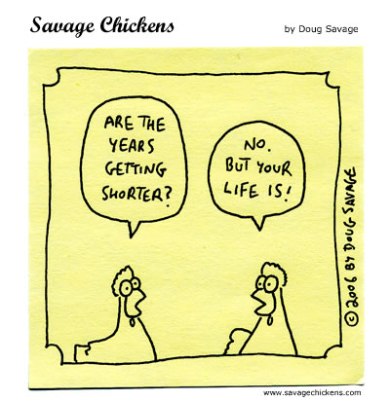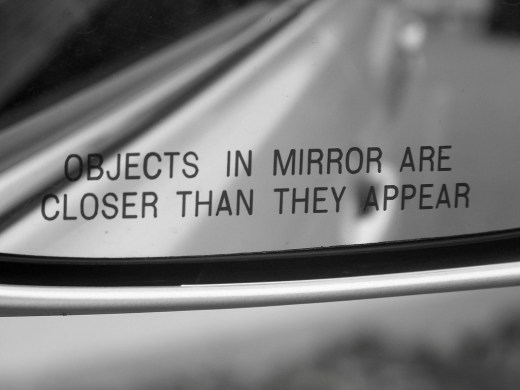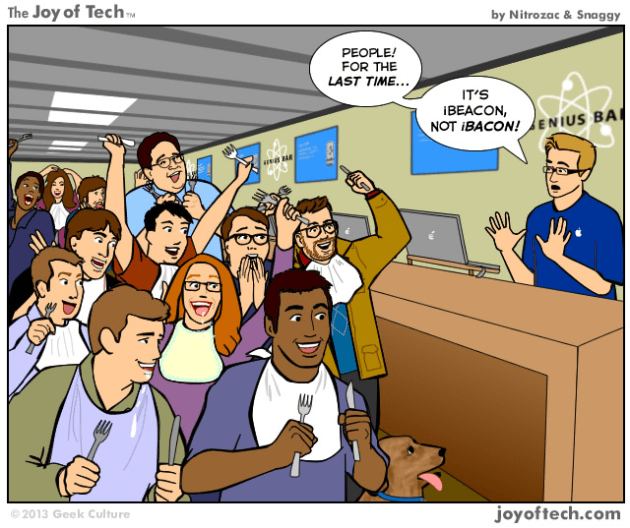
I don’t write a lot of blog posts but when I do, I like them long… So brace yourself.
It is a tradition – the end of the year brings post-mortems, resolutions for a new year, regrets for past mistakes, hopes for the upcoming year. It’s a great time to clean up lingering issues, customers you never came back to, finalize next year’s product roadmap, reconnect with old friends etc. It’s also a great opportunity to spend some time thinking about what you learned and how to be better at what you do.
On my side, it’s been one of the most stressful and intense albeit fulfilling year. We went from having not much more than a good idea with the wrong execution and deployment strategy to an actual company with a great team and amazing backers.
Some background
For those of you who did not keep track, 2012 was for me another year of changes. I left my job at Gilt City to start a company with Paul Berry called CasaHop. We very quickly raised some nice seed money from a great roster of investors. We were trying to reinvent home swaps by removing some of the friction that happens when you do a home exchange. Paul is a big user of home exchanges and I became one – it is a unique experience, connecting people that don’t know each other and end up staying at each other houses. Our thesis was that the current incumbents like HomeExchange.com were outdated, not leveraging the social graph to bring liquidity and a bigger sense of trust. The reality was that the model was incredibly harder to scale that we initially anticipated and traction was not coming. I moved on in October but, even though this one didn’t work out, I was hooked on the roller coaster life of building companies.
While helping on the side some startups like Loosecubes and Ykone figure things out, I started a discussion with Alex, my current co-founder, about Placemeter. I was blown away by Alex’s vision:
- The physical world is getting more and more instrumented. Currently thanks to smartphones, location-aware devices, location data, ibeacons. Tomorrow with the tens of billions of devices that are getting connected to the cloud
- The relation between physical places and people is still incredibly outdated. In this digital age, it sounds very “analog” to have to go in person to places to get a sense of how it is and how it will be.
- The disconnect between expectations and experiences for customers is ruining real world retail. Matching these two will have a dramatic effect on customer satisfaction, leading to higher AOVs, deeper brand loyalty and turning customers into brand advocates. As a great marketer friend was telling me: if you guys can solve that discrepancy, your solution will have incredible value for all CMOs around the world.
- The first approach to solve that disconnect is to share with people how places are so they can know in advance what to expect. If we can collect and then distribute accurate real time data about physical locations (think “how busy a store is”, “how long the wait is”, “how many tables are free right now” etc.), something that no one yet figured how to aggregate, we were on to build a very valuable company.
So I whole-heartedly jumped in at the end of 2012 and joined Alex as a co-founder and employee #2.
The early days
Our initial approach to collect this data was to deploy physical sensors in locations. More precisely, sensors that were streamed into a mini-PC that would process in real time videos and then send the extracted data back to our servers using M2M connections. The first sensor was an inexpensive webcam and we were leveraging Alex’s 20 years expertise in computer vision to extract all the data that I mentioned above.
The early days were brutal. The hardware was not easy to scale. We ended buying 2 Makerbots to print the boxes containing our mini-PC but printing fairly large objects on Makerbots is NOT easy. M2M connections were hardly stable and we ended up switching providers multiple times. While Alex was busy building the backend and fine-tuning the computer vision algorithms, I was knocking on doors to get some pilots going. We installed several customers, mostly in the retail and QSR space like Ligne Roset and a few others. Competition was also intense as solutions like Euclid or Nomi were scaling while historic players like Shoppertrak were pretty entrenched with large retailers. Our key differentiator, to share with the public how stores were in real time, was not fully understood by our customers. They were open to get the data even though they did not put a lot of value on it, but were not ready to share the data with anyone else.
The pivot
Early signs were not good: customers weren’t solidly hooked, fundraising was hard, mostly because of the hardware component and the go-to-market strategy, and we learned that deploying sensors into our customers locations was:
- Hard to scale on hardware unless you have the right resources (which we did not)
- Hard to own the data you collect inside of retailers if it requires them to let you install a device
- Slow moving sale cycle
- Low monthly fees
- Limited value of the data if it’s trapped inside the retailers.
At that point, we were deep into TechStars NY Spring 2013 program and really had to make a decision. Go deep in a B2B solution (traffic counters, retail analytics but highly competitive with entrenched players and low value for the data) or go back to the original vision and find a way to make it happen. The TechStars team, especially David, was instrumental in pushing us towards a pivot. So we jumped. It was freaking terrifying because it really meant turning our back on a lot of months invested in our previous approach, shutting down existing customers, and rebuilding a lot. But all that is sunken costs and, even though you’re emotionally attached to what you’ve built so far, if walking away from it is the only rational decision to still have a shot at it, you don’t look back.
Erin covered it in an article on PandoDaily – what she didn’t know at that time was that the pivot really happened a few weeks before the dreading demo day – 600 investors looking at you pitching them on stage at Webster Hall. So it was all about getting as much done as possible to show some early traction on our new model.
The pivot we made was to switch how we collected the data. Instead of looking at places from the inside (with all these frictions points I mentioned above), why not look at it from the outside: this way you own the data and you add another layer to it since you’re now also capturing number of people walking in the streets, cars passing by, trends in traffic etc.
June was insane – Alex and Warren, our CTO then, were building the backend and the computer vision algorithms while me, Jason, an awesome team member who took an early bet on us, and Dimitri, our incredibly efficient intern, were trying to deploy as many crowdsourced sensors as possible.
We were back into chasing a very big goal with a gutsy vision and that got all of us energized like crazy. That amazing feeling on being on 30 coffees every day, short nights, your mind constantly going back to improve our process, scale faster, the feeling of making giant leaps, days looking like months in achievements but like minutes in duration…
The fundraising
Thanks to the revised approach, we saw A LOT more traction with investors. Given that we were mostly selling the vision at this point, we had to go after ambitious investors that got the large vision. Alex and I are both in huge favor of over-involved investors rather than the opposite. Yes it takes time, yes you might not immediately see why you’re spending that much time on a board deck but, ultimately, you won’t be able to build that business alone. You need all the – smart – help you can get. Get it from your advisors, get it from your friends or family but also get it from your investors. Investors see repeatable patterns, trends, a bunch of companies that may be in your space, and they definitely don’t have your tunnel vision and will force you to get out of it (when they’re good and active).
Demo day was at the end of June and we scheduled meetings all of July and August while trying to keep on building the business. Fundraising is definitely distracting but if you split team, you can get a lot done. Early September, two great leads that we liked a lot emerged. As you may or may not know, once you have a lead, the rest goes pretty quickly – all the investors that were sitting in the sideline, waiting for a lead, can then commit pretty quickly and in matter of a couple of weeks, your round is pretty much done.
Due diligence took another 30 days. At that point, Alex was back into building mode along with Nik, our amazing lead engineer, who joined us from Google while I was spending a good chunk of my time with our lawyers finalizing things. We’ve been busy building and never took the time to announce who are our investors but we’re planning on doing that in January. Stay tuned on that and some other interesting product releases including our app that let you know in real time how are a bunch of places in New York. And feel free to sign up for the early beta on our site. You can even become one of our contributor and help make your city smarter!
Early product / market fit
Obviously once the money hit the bank, this is really just the beginning. I’ve been there in the past and seed money really only give you a shot at building the MVP of a product, prove a few elements of your initial vision, get you some early pilots and customers and somewhat of a product / market fit. So there’s really no cause for celebration, on the contrary stakes just got way higher…
My background is a lot around deal making: M&A, JV, sales, business development etc. So while we were closing our round, we obviously kept the ball rolling with potential customers and we signed very quickly our first pilot with the City of New York. The process is an illustration on how New York City, as an administration, came a long way under Michael Bloomberg. We worked with Michael Flowers and Chris Corcoran with the Mayor’s Office for Data Analytics, a “geek squad” (as the NYTimes called them) reporting to the Mayor and incredibly efficient at working with early stage companies and getting things done.
We now have another two big names and paying customers that are leveraging our data (still under wrap for now) and we’re making our way towards the product / market fit for the company. And since we got a lot of external validation from onboarding these pilots to winning the startup contest at the WebSummit, it really feels like we turned a corner!
They made it happen
Ok – this will feel like name dropping but I can’t over-insist on the critical importance of surrounding yourself with smart people that believe in what you do and I want to thank the people that made it happen for us. We were very lucky to get surrounded by awesome mentors during and after TechStars. People like Mike, Marissa, Ori, Alexandre, Sean, Jon, Matt, Darren and Taylor, Alexandra, Geoff, Thatcher and all our TechStars Spring 2013 alumni class – I don’t think we could have done it so far without you guys. If you stay clear of mentor whiplash, there’s an insane amount of value you can get by tapping all these extremely smart brains. And I don’t think we could have raised money without the insane will of Nicole who had Alex rehearse hundreds of times his pitch for Demo Day…
I should probably devote at some point a post on how to leverage personal mentorship but the short of it is that you should always complement company’s mentors and advisors with smart friends and personal mentors that can help you go over personal issues. Life in startup is definitely not for everyone and is brutal – there’s intense competition for attention, dollars, recognition etc. and you go through ups, downs, fights with your cofounders, doubts about your capacities, about how you deal with things and on and on and you have to find a way not to keep all that trapped inside. I would not have made it without the unlimited support of my lovely wife and that little dude.
2013’s key takeaways
This is really what surfaced for me when I tried to summarize what I learned this year building Placemeter along with Alex and the rest of the team:
- Persistence: Startups are not for people who give up easily or get discouraged quickly. There’s a fine line between being stubborn and being persistent (more on that below) but you still need to get at it pretty strongly and not let go easily.
- Adaptability: Well, you also need to adapt and make decision based on what you hear. If the market, the investors or even your friends are all telling you that your approach doesn’t make sense, don’t get tunnel vision. Make sure you listen and adapt your pitch, go to market or tech approach.
- Resilience: Thick skin. You need one or you need to grow one quickly because of the amount of rejection you’ll be getting on a daily or even hourly basis.
- Creativity: Your approach doesn’t work? You don’t get any traction with it? Get creative and find another way. You’re going to have to try so many approaches before maybe finding the right one.
- Scalable vs Non scalable: There’s also something to be said about doing non scalable things at the beginning of a company. Things that cost more money that you want in the long run, that takes way more effort than you would want but that give you early results, liquidity etc. On our side, we realized that we needed to have a couple of key places in NY covered by our video streams, places like Trader Joe’s or Whole Foods. So we ended up knocking on doors and convincing businesses or individuals across the street to get them to place one of our sensors on their window. That made it for us.
I’m looking forward next year challenges – they’re going to be different, they’ll bring their lot of frustrations and depressing moments but also small and large wins and the overall intoxicating feeling of doing something impossible. We have an awesome team and that’s part of what get me super excited (one of the benefit of starting companies is that you get to work with people with whom you want to work with…), smart and engaged investors and mentors and an overall vision that get me out of bed in no time in the morning. Let’s catch up next year at the same period and see how we delivered then!
Hope to try to find more time next year to connect with friends and mentors – that’s one of my big regrets for last year – see you then!







